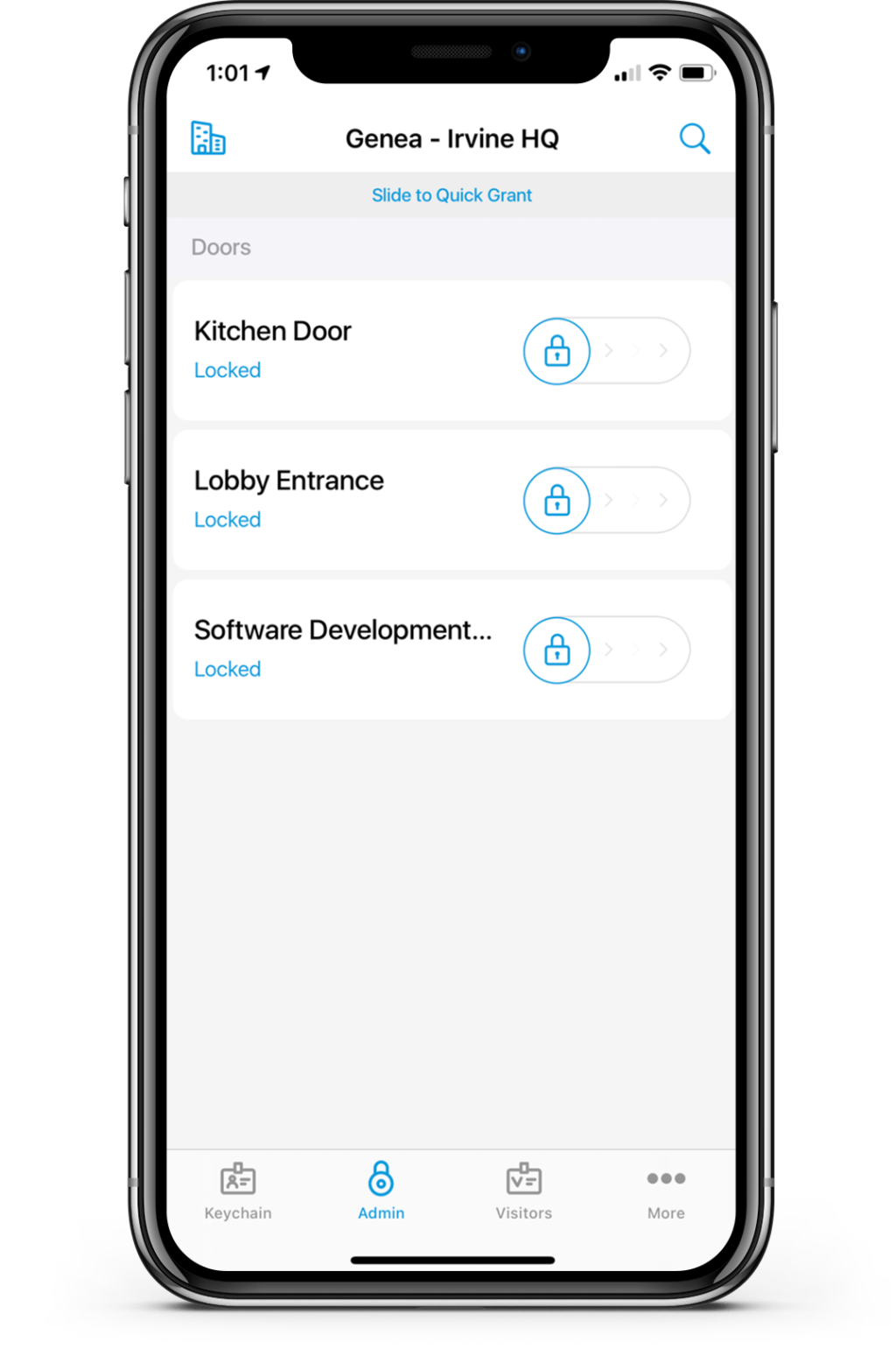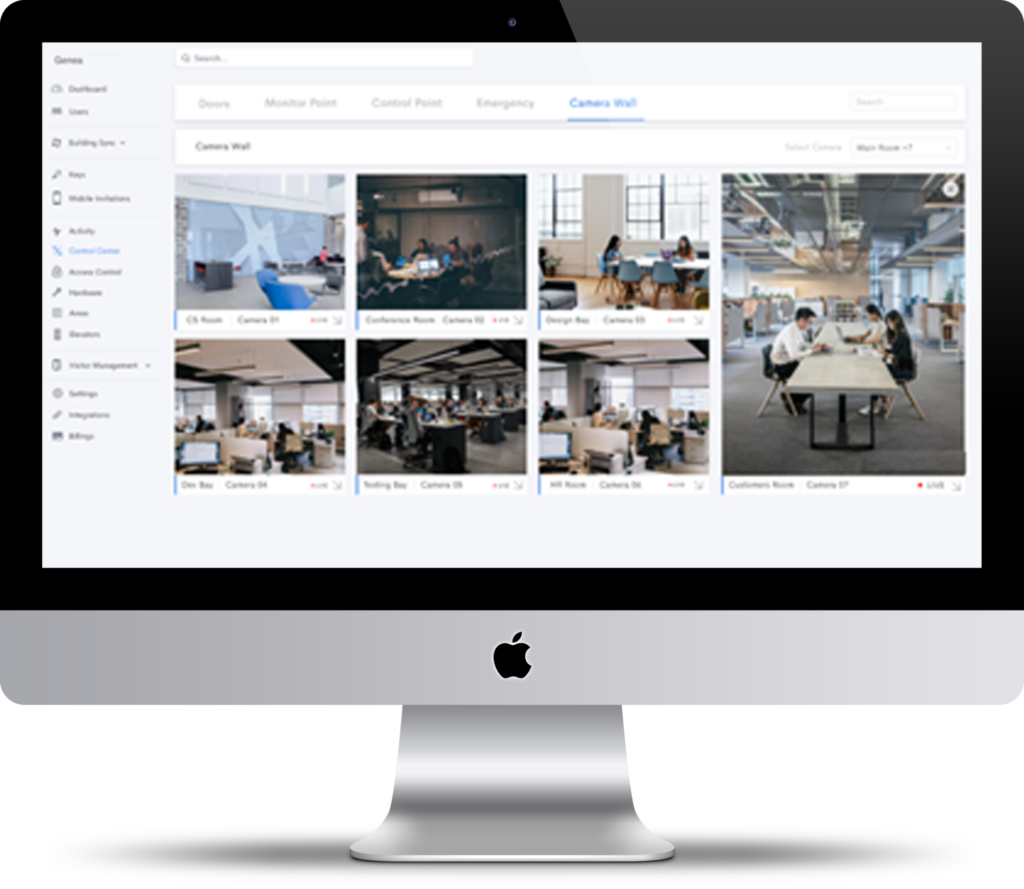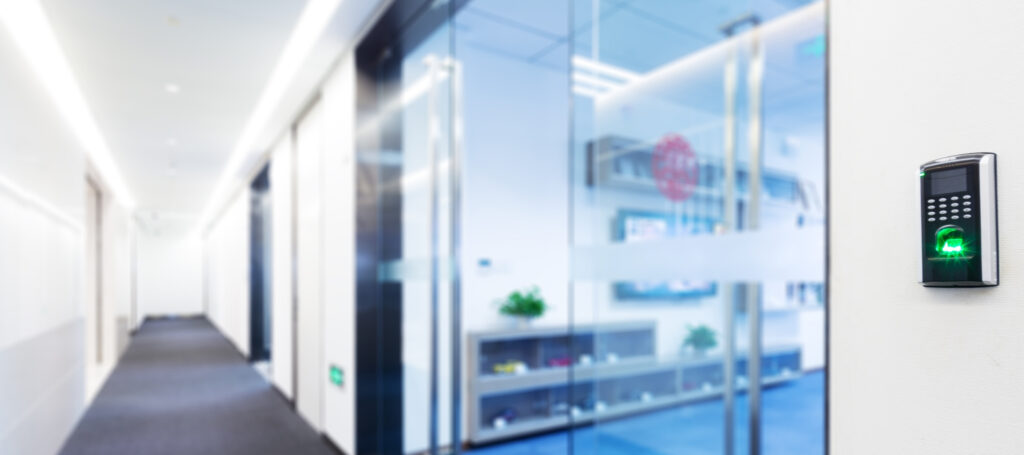Cloud-based vs. on-site, keypads vs. proximity readers — when choosing door access control systems, the choices may seem endless. But answering a few questions can help whittle down the options, saving you time, money, and a bottle of aspirin to combat the headache from information overload.
First Things First: What is an Access Control System?
An access control system is a building’s first line of defense. Sure, it is a way to monitor potential problems. But if implemented effectively, door access control becomes the ultimate guide to building operations. It can give property managers the capability to know who and when someone enters; if any tailgating occurs; and help monitor employee and visitor movement. Some systems even send video or notification alerts to mobile devices. To assess the most effective door access control solution, it is best to know your building.

Multi-door Access Control vs. Single-door Access Control
Who doesn’t like keys? They’re shiny, tangible and they make a cheery, jingling sound. Once upon a time, the key and its deadbolt partner—the deadbolt—were the premier door access control devices.
The combination worked well for single-door access control…until it didn’t.
Enterprise access control required a more robust solution. Enterprises, with their many doors and access points, didn’t want employees carrying around keyrings full of keys. From a time and productivity standpoint, the key simply wasn’t the key.
Then, along came the keycard. It was slim, trendy, could unlock multiple access points, and—unlike its shiny predecessor—it could be reprogrammed or deactivated. While keys still found use in residential access control, they became less popular in commercial real estate.
Those looking to invest in access control should ask whether they will need a multi-door or single-door access control solution. As mentioned, enterprises with their many access points, buildings across the country and large workforce, rely upon cloud-based access control. However, a gym or retail boutique owner with one door may still find a cloud-based access control solution convenient.
While it is important to consider the current points necessary to equip, considering future building expansions, employee increases, and access control technology is vital in choosing a system.
Door Lock Options for Your Building
After determining whether a single- or multi-door solution is best, consider the optimal door lock. Determine which lock makes sense for the current access points and budget. But also, keep in mind any changes that might occur in your building or the area that surrounds it. Will the changes ensure current and future security? Here are some choices when considering locks:
Standalone locks are battery-powered, all-in-one locks on a single door. Often internal batteries power these locks. Standalone locks, like a keypad, can be operational within minutes of installation. However, incorporating these into a broader security network is impossible.
Proximity readers are used in most current access control. HID cards and mobile-based access devices can be used with proximity readers. Those choosing a mobile-based system can easily alter credentials. This translates to no more lost or cloned keycards, and if an employee gets terminated their credentials can be swiftly removed from the system.
Key Switches use a traditional key but operate using electricity. These can be found as a failsafe outside some residential apartment and condo garage doors and inside warehouses.
Biometric Systems became the gold-standard in Hollywood Sci-fi/Action movies. These include fingerprints, handprints, or retinal scans. They are considerably more expensive, and early models have proven less-than-reliable outdoors. Industry experts recommended against using biometric locks on building exteriors.
What Integrations Will You Use?
In 2021, cloud-based access control systems are in vogue. Why? Part of the reason is application programming interfaces (APIs) — a computing interface that allows for interaction between multiple software applications.

Cloud-based companies are consistently releasing customer-requested integrations. This means your security system will do more than trigger an alarm. Cloud-based access control will integrate with video management systems to transmit live video feeds to mobile devices of the property team members.
“Make sure your access control system is something that you can integrate with other platforms,” said Mike Maxsenti, Head of Access Control Operations at Genea.
Companies will want to make sure their access control can integrate with their identity management platforms. Maxsenti said smaller companies will likely use Google Workplace, whereas enterprises favor Okta.
On the precipice of a post-COVID-19 return to the workplace, access control companies are integrating features that address health safety in the office. Health questionnaires, contact tracing, capacity limiting, and thermal body scans are just a handful of such features. However, while these features may function similarly, the implementation varies. Some companies, like Genea, have developed software in-house. Other access control companies offer software integrations with third-party vendors. The long-term reliability of the integration depends on the two companies.
Maxsenti’s advice: “Make it cloud-based, make it non-proprietary, and make sure it’s flexible.”
Interested in learning more about access control? Schedule a demo to see how Genea can help.



